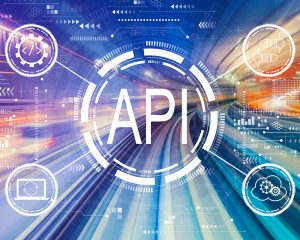Unlocking patient data is instrumental to your success, whether you are a healthcare provider, health IT vendor, or payer. During a recent webinar with Healthcare IT Today, LexisNexis® Risk Solutions and Clarify Health, moderator John Lynn, founder of Healthcarecene.com, led an engaging discussion about interoperability in healthcare.
Jonathan Shannon, senior director, interoperability solutions at LexisNexis Risk Solutions, provided a solid foundation on interoperability and why it matters. And Elizabeth Rose, director of data strategy and partnerships at Clarify Health, dug into the patient journey with some patient case studies.
In this blog, we will recap some of the highlights from the discussion, and you can watch the on-demand webinar here.
What is Interoperability?
Interoperability, in Jonathan Shannon’s words, is: “the ability to securely exchange electronic health information without special effort on the part of the user.” The 21st Century Cures Act, passed in 2016, granted greater visibility and importance to interoperability by promoting patient control, more informed decision-making, and more efficient healthcare systems. It also laid the pathway to Patient Access APIs. As a result of the Cures Act, patient data now comes in a uniform standard, FHIR, making finding and releasing data much faster. Whether patients themselves or entities working on their behalf request information, they can access it much quicker than ever before.
What is a Patient Access API?
Today’s Patient Access APIs build on the foundation of legacy interoperability standards. With legacy standards, patient information within electronic health records (EHRs) is fragmented and challenging to piece together.
Patient Access APIs are government-mandated, first for government-sponsored health plans (as of July 1, 2021), then for all EHR data (as of December 31, 2022). It adheres to strong technology standards and relies on patient consent to drive the flow of data. If patients want access to their healthcare data, regulated organizations must release it.
What does healthcare data interoperability mean for organizations?
Where legacy interoperability faces challenges of fragmented and incomplete data, inconsistent formatting, and latency issues, Patient Access APIs are fundamentally more holistic and use modern technology standards to accelerate access. By calling Patient Access APIs, patients can share data such as demographics, claims data, coverage eligibility, drug formularies, and more. Because it follows a uniform standard, the data is much easier to ingest, analyze, and use to provide actionable insights and improve patient outcomes. Organizations with a direct patient relationship can now access this data to provide better engagement models, prefill treatment plans and care teams, feed risk models, and many other potential use cases to benefit their patient population.
Finding powerful insights from deidentified patient data
While identifiable patient data may pose security concerns for some digital health companies, new developments such as greater access to social determinants of health (SDoH) data and next-generation tokenization further break down barriers to interoperability in healthcare. So now, healthcare organizations can reap the benefits of increased interoperability and deeper, more meaningful impact for patients without revealing patient identities.
Uncovering the true picture of a person’s healthcare history and life experiences — is core to understanding barriers and opportunities to better patient outcomes. Elizabeth Rose of Clarify describes this comprehensive patient journey as the “golden thread.” Tokenization allows an organization to complete the thread by gathering all the relevant data and de-identifying it to protect patient privacy and stay HIPAA compliant.
However, many legacy tokenization technologies have relied on algorithms, which can often miss matches between two pieces of data on the same person, say because of a change in name or address (i.e., under-linking). These algorithms can also erroneously match two pieces of information by linking two similar-seeming patients as the same person (i.e., over-linking). Next-generation tokenization overcomes these limitations and can provide a more complete patient view leveraging an expansive referential dataset. The Gravitas™ platform accomplishes exactly that. It introduces smart tokenization to bring together previously “un-linkable” disparate datasets into a holistic, longitudinal view of patient journeys.
Together, these de-identified patient stories can help organizations design programs that better address patient needs. Rose demonstrated how data could power models of anticipated outcomes for providers and payers. They can predict — for example — costs, utilization, and performance for a given patient. More accurate models can reduce friction and build trust between payers and providers.
Uncover insights that drive meaningful impact
Optimized interoperability through next-generation technology and comprehensive, consistent data allows organizations to pair their data with additional datasets to reveal valuable insights for partners and customers while protecting healthcare data security. These insights might include ways to deliver care more effectively to patients, reduce adherence barriers, or connect patients with the right providers. The availability of Patient Access data and next-generation tokenization, provide opportunities never seen in health data. Organizations gain efficiency, accuracy, and trust. Ultimately, more streamlined, and accurate data exchange benefits the patient most of all. And I think all of us can agree, we are in the business of improving patient outcomes and healthcare as a whole.
Explore healthcare interoperability from LexisNexis Risk Solutions, today.





